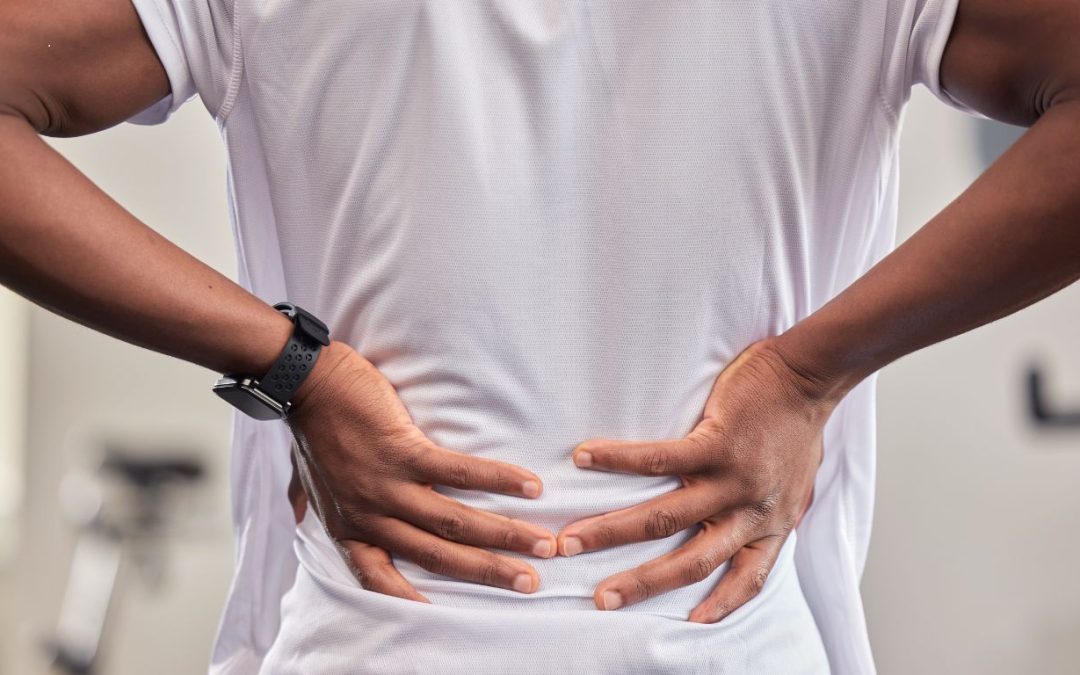Understanding lower back pain – A structural approach
A 33-year-old lawyer was referred to me by his doctor to help him navigate his lower back pain.
He had also been waking in the morning with dull lower back pain. He had been running a lot, training for a half marathon so figured it was linked to running volume.
After he completed his half marathon race, he eased off running and introduced some yoga instead, because his lower back felt tight and he hoped stretching would help. He also tried a standing desk, but this did not make any difference.
He also wasn’t sleeping well and was generally fatigued – this wasn’t immediate but had crept in overtime making it hard to pinpoint a cause. Visibly, he reported dark circles under his eyes and his friends and partner noticed that his hair was greying and his posture had changed.

My patient tried changing things that he thought could be contributing, one at a time.
He removed caffeine, drank more water and less alcohol, had blood tests looking at inflammatory and fatigue markers (no indicators found) and sought coaching to better manage his stressful job. All these things were constants before and during experiencing the fatigue but whilst they might have contributed in some way and were good things to address, they didn’t give him back his day-to-day energy.
He replaced his mattress but the tightness didn’t go away in his back – the pain was a 4/10 so he put up with it for a year, as many people do but the lower back pain was waking him up and his disturbed sleep alongside the tightness sensation during the day was compounding and making him feel miserable.
The Art of Physiotherapy Observation
As my client walked in, I could see his body had acquired a certain shape called sway back posture. This position would have some impact on his alignment and might be driving his lower back pain symptoms. I neeeded to determine whether this was a structural issue or whether his body had acquired this shape to function and carry out his daily tasks as a runner and a lawyer.
The lower back pain is a symptom, not a diagnosis. The aim of our sessions is to find out why his body has acquired this body shape. Nothing really came up in his past injury history apart from the fact that he is a kite surfer, and has had minor injuries throughout his lower body which have mostly happened at high speed so his body could have acquired this shape to protect him.
Physiotherapy Assessment – Structural Approach to Lower Back Pain.
I wanted to get my hands on his pelvis to assess his bony landmarks in a three-dimensional position in standing as this would give us a better understanding of the sway back posture. I placed my hand on his pelvis and could feel and see that his pelvis was shifted forward in the direction of his toes, and his tail bone tucked under into a post tilt which would extend his lumber spine and make his muscles feels longer. I needed to teach him how to shorten these muscles.
Understanding patient alignment and where they currently are is key in resolving their issues. Patients will not recover after lower back pain if we are just being reactive, following an algorithm approach to stretch and strengthen things rather than taking a structural approach to knowing what position our patients are holding their body in and why.
By understanding his pelvic alignment and the affect it will have on his muscle attachment, we then know that his muscle around his back feels long and the muscle at the front feels short, which was causing one of his main concerns. His muscles felt tight during sleeping, everyday work and daily activities. His standing desk wouldn’t make a difference to this due to his sway back posture.
When I followed this up to his mid back, I could see he had a flex spine to keep his weight into his heels like a kyphotic posture and extended cervical spine to keep his head and eyes on the horizon.
Mobilisation and home exercises
Our first physiotherapy session was low lumber traction, hands on position and low-level Maitland mobilisation techniques. The goal of this hands-on technique was to aid joint movement which will then relax the lumber and thoracic muscle, aiding better blood circulation and nourishment to these areas. Because his lumber spine was just stuck in extension, he had not experienced the opposite side of the coin which is lumber flexion and thorasic spine extension.
This method of mobilisation occurred throughout our time together and helped my patient get both a better awareness of what his lumber spine should feel like and a better understanding of the movement’s sequences.

Movement Sequences for Better Re-education
We introduced lumber extension and thoracic extension using restorative yoga positions. I got him to lie on his stomach with his knee and hip flexed which allowed his pelvis to experience anterior tilt and his thoracic spine to experience extension. I then used the sphinx yoga position to aid thoracic spine and lumber spine extension. This again leads to anterior tilt pelvis position. We then added in an all four position to help him discover an anterior and posterior tilting pelvis on axis without engaging his shoulder and thoracic spine.
This is a good isolation motion to help improve pelvic and lumber spine awareness. You learn quickly that you can’t move your pelvis and if you can’t do that, your lumber spine doesn’t get to experience true flexion and extension mechanics. A lot of the time with lower back pain, the issue is that your body has forgotten or downgraded the system, so you don’t use your lumber spine during daily movement, and you are not aware until it’s pointed out to you. When you work with me, the is the most important thing – to get an awareness of where your body is. I can then give you the skills to resolve the issue.
Dynamic Neuromuscular Stabilization Sequences
The following session and home exercise were based around movement sequences on the floor, creating shapes that would get his pelvis to experience anterior tilt and his thoracic spine to discover extension with anterior tilt pelvis which is the opposite to the position that his body is in. These movements, like all four positions, moving the upper body into and out of thoracic extension to flexion will be a new experience for his body.
Using different positions to create the opposite shapes to what his body is currently in was a therapeutic experience. We also did drills where he had to get up into standing from a sideling position, which encouraged his core muscle and spine to start having a better understanding of the recruitment sequences that are needed to help aid his alignment issue into a more coordinated manner during every day tasks.
His body had acquired this shape and the movement sequence and hands on drills were going to aid his alignment back to normal. The aim was to decrease the tension in his lumber spine muscles so he could have a better night sleep and to improve his ability to move more efficiently during daily life activities.
I visited Kevin who was able to identify I had a sway back posture straight away, and located areas of tightness. The targeted exercises have eased the tightness in my back and my posture has started to change – I walk differently and I am more upright. This will be something I need to continue to work on, as I can occasionally feel the tightness coming back – Kevin has given me the awareness to spot this and exercises to manage it.
As a result, my sleep has improved and I don’t wake up in pain any more. I feel (and look) refreshed in the morning, have more energy to exercise / do my work and I am less tired at weekends. I’ve also seen some grey hair reverse back to its original colour (I’ve no idea if this is linked, but the timing coincides with getting more sleep!).
Conclusion – Reduced Lower Back Pain
This case was lovely to play a part in. I was able to aid my patient with self-healing and awareness and he continues to progress on his journey. What we have done together has given him his own personalised tool box and an awareness of his body and how it functions in his daily life and his chosen fitness regime. He now knows how he can facilitate his body to do the things that are right for him and not try to force his body to fit where it can’t.
That’s an important skill I feel to have, to know where you don’t fit and to take a step back and work out why. When your body is telling you ‘I don’t like performing these burpees’, stop and listen to it. It’s not failing you it’s giving you information so please listen.
Could your posture be driving your lower back pain?
In my opinion, your posture is driving most issues we see within heath practice. Just because you have always been or moved a certain way, does not mean its efficient for your body to stay in that position. You might not be experiencing any structural or medical issues that you are aware of but it’s amazing how we normalise things.
If I was just walking to the bus stop and working every day I may only experience minimal issues but if I am trying to run a marathon or do Brazil jiu jitsu, things would quickly become apparent that my body is not as efficient as I thought because the demand is greater, and my structure is unable to deal with the intensity and complexity of these movements. The knee jerk reaction is often to train more or train harder and get stronger but what if that makes you feel worse?
Instead of looking at the root cause of an issue, we automatically chase a cure. In the short term it feels like it’s the answer and we reach for that pain killer, or a strap to support the knee but all you have done is silence your pain. It is still present in the background and will come back to bite you when you don’t expect it or realise that its manifesting into another problem.
Always try to find out the why the how and don’t just chase a cure. Get into a space of healing and self-discovery, that is true therapy and will give you the skills and awareness to take ownership of your recovery.
If you need another perspective and a different way of tackling an issue, why not book in and get started?
